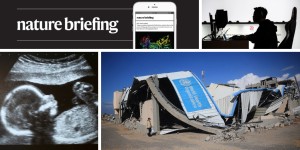
The research grants are still frozen even though lawsuits are challenging the order
The back-door to budget freeze-out: critics of the new administration and their plight on scientific funding and research communications in the U.S.
On 27 January, just one week into the new administration, Trump’s budget office froze all federal grants and loans, saying that it needed to review government spending to ensure that it aligned with the executive orders. Chaos erupted as agencies, including the NIH and the US National Science Foundation (NSF) — both major funders of basic science — halted grant payments, cancelled review panels for research-grant funding and paused communications. A federal judge temporarily blocked the order, but disruptions and confusion continue.
The review panels were suspended because the administration barred the agency from taking a procedural step needed to schedule them. This has caused an indefinite lapse in funding and left scientists facing difficult decisions about the future of their research programmes.
Some legal scholars say that this ‘back-door’ approach to freezing funding is illegal. The power to appropriate funds in the United States is given to Congress, not the president or his team, according to David Super. Blocking “advisory-committee meetings that are legally required to make payments is no different in effect than simply refusing to sign contracts or issue cheques”, he says.
The Impact of the Second Donald Trump Administration on Scientific Progress: An NIH Review Officer’s Response to Trump’s ‘Trend Reversal‘
To get approval, the applications are considered by two separate panels. A group of independent scientists meet to score applications in the study section. The agency’s advisory council is made up of external and internal scientists that make a final check on applications before a funding decision is made.
According to the e-mail, the Trump administration will, in future, require that these notices be posted at least 35 days before grant-review meetings, instead of the standard 15 in effect previously. This means that, even if these notices were allowed again from today, the earliest date on which a new grant-review meeting could be scheduled is 28 March.
A small number of study sections have convened since Trump took office, but only because a Federal Register notice was to be posted before his inauguration. The continuing cancellation of these meetings has had a snowball effect, and there is now an enormous backlog of applications (see ‘Trend reversal’).
“As we get more backed up, there will reach a point where it’ll be impossible to do peer review in time for the [second] council meeting date,” says an NIH scientific review officer, who requested anonymity because he is not authorized to speak to the press.
In the wake of the Second World War, US leaders adopted the view that scientific progress is an “essential key to our security as a nation, to our better health, to more jobs, to a higher standard of living, and to our cultural progress”. Both sides of the political aisle agreed to invest in US science for the next eight decades. Just one month into the second administration of Republican President Donald Trump, scientists fear that that long-time consensus is disintegrating.
The United States withdrawing from the Paris Agreement to rein in global climate emissions was one of the expected orders. Others had surprising and immediate ripple effects through the scientific community.
One order erroneously attempted to define only two biological sexes, male and female, and banned federal actions “that promote or otherwise inculcate gender ideology”. Biomedical-research agencies such as the US Centers for Disease Control and Prevention (CDC) scrambled to respond by, among other things, taking down data sets from their websites and pulling back manuscript submissions from scientific journals to purge terms including ‘gender’ and ‘transgender’.
Another executive order banned what Trump called “illegal and immoral discrimination programs, going by the name ‘diversity, equity, and inclusion’ (DEI)”. The employees who didn’t report colleagues that were disobeying the DEI would face adverse consequences according to the e-mail. Some scientists were alarmed to learn that the agencies were ending DEI programmes which were designed to protect low-income communities from pollution. Even some scientific societies and private research organizations scrubbed DEI mentions from their websites. The investigation of foundations and non-profit organizations was called for by Trump in one of his orders.
A university scientist who asked not to be named because their research is funded by multiple US agencies says that the investigators they lead are suffering in this environment. “Everything is on you to manage your grants and your team,” they say, adding that “there’s a lot of fear of people not wanting to say or do the wrong thing” and therefore lose financial support for their work. I have lost sleep and it is completely chaotic.
Trump’s unprecedented directives landed as his partnership with billionaire entrepreneur Elon Musk has flourished. The pair are working together to cut spending and dismantle agencies that fund global disease research, prevention and care.
The Trump administration has moved quickly to undermine the federal workforce, including about 285,000 scientists and engineers, in order to accomplish Musk’s goal. Initially, a 30 January e-mail offer to all federal employees asked them to “move from lower productivity jobs in the public sector to higher productivity jobs in the private sector”; around 75,000 employees subsequently resigned, on the promise that they would retain their salary until September. In mid-February, layoffs began for people who were hired in the previous two years, which meant that early career researchers were particularly affected.
